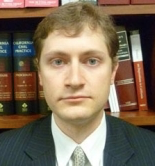Grinberg: Farewell to Vocational Apportionment
Tuesday, June 27, 2023 | 0
The Workers' Compensation Appeals Board has issued an en banc decision in the matter of Nunes v. State of California Department of Motor Vehicles, and it’s a doozy.

Gregory Grinberg
In a perfect world, we’d have a hard-and-fast rule from the WCAB that if there is apportionment to nonindustrial or prior industrial factors, vocational rehabilitation cannot be used to rebut the rating schedule. Alas, it is not to be. So, let’s dive into what we do have.
There are a lot of details to this case, so if you’re like to do what the kids call “tldr,” here’s the skinny: “Vocational apportionment” has something in common with Santa Claus and the Easter Bunny, as all three are figments of the imagination of some of our colleagues. Apportionment analysis made by a vocational rehabilitation expert must follow the rules set out for medical apportionment, and the fact that previously asymptomatic conditions failed to manifest in work restrictions or reduced wages is irrelevant.
To rebut the PDRS and show permanent total disability due to the applicant not being amenable to rehabilitation, the voc-rehab expert must show that one industrial injury was sufficient to render applicant unable to participate in the open labor market.
Now for the details.
In the Nunes case, applicant sustained two admitted injuries working for the same defendant: one to her neck, upper extremities, and left shoulder; the other to her bilateral upper extremities as a cumulative trauma. The agreed medical evaluator found 100% industrial causation for the left shoulder, 60% industrial causation for the cervical spine, and 40% industrial causation for carpal tunnel CT. The AME further opined that she did not expect applicant to be employable in the open labor market due to pain and function.
Applicant’s voc-rehab expert concluded applicant “sustained a 100% loss of access to her open labor market.” He deemed her “not amenable” to vocational rehabilitation. The expert, though, distinguished “medical apportionment” from “vocational apportionment,” noting that her nonindustrial factors have no impact on her earning capacity and that the AME’s permanent work restrictions “have rendered Ms. Nunes 100% permanently and totally disabled,” and that this would be the case solely on her left shoulder and cervical spine complaints.
By contrast, the defense voc-rehab expert traced the AME’s apportionment to conclude that at least 10% “vocational apportionment” to nonindustrial medical factors existed in this case. After a trial, the workers' compensation judge found 100% permanent disability based on the opinions of the applicant’s voc-rehab expert.
The WCAB had several rulings in response to defendant’s petition for reconsideration. First, it ruled that there is no such thing as “vocational apportionment.” A reporting physician is authorized and required, under Labor Code Section 4663, to make an apportionment determination for other factors causing permanent disability (non-industrial, prior industrial and post-injury factors included). Likewise, the en banc opinion holds, “[I]n order to constitute substantial medical evidence, a vocational expert’s opinion must detail the history and evidence in support of its conclusions, as well as ‘how and why’ any specific condition or factor is causing permanent disability.”
The WCAB concluded that vocational evidence is relevant to the issue of permanent disability and can be used to rebut a schedule rating by establishing “that an injured worker is not feasible for vocational retraining.”
Finally, the WCAB held, “[I]n order to constitute substantial evidence, vocational reporting must consider medical apportionment.” The WCAB continued, “[F]actors of apportionment must be carefully considered, even in cases where an injured worker is permanently and totally disabled as a result of an inability to participate in vocational retraining.” However, required apportionment analysis “does not permit reliance on facts offered in support of a competing theory of apportionment.”
Providing general guidance, the WCAB offered this: “[A]n analysis of whether there are valid sources of apportionment is still required even when applicant is deemed not feasible for vocational retraining and is permanently and totally disabled as a result. In such cases, the WCJ must determine whether the cause of the permanent and total disability includes nonindustrial or prior industrial factors, or whether the permanent disability reflected in applicant’s inability to meaningfully participate in vocational retraining arises solely out of the current industrial injury.”
Now, before we get to the end of the story and the result, that last line has me checking under the bed for monsters. Did the WCAB just give vocational rehabilitation experts the boilerplate language they must now paste into every report to avoid apportionment? If a voc-rehab expert can justify a theory that applicant is rendered unamenable to rehabilitation solely from work restrictions on a body part that is not subject to apportionment, is that enough to reach 100%?
The WCAB concluded that, based on the opinions of both voc-rehab experts and the AME, “[A]pplicant’s inability to participate on vocational retraining renders her permanently and totally disabled.” However, what about the apportionment issue?
The WCAB held that because applicant’s vocational rehabilitation expert asserted that the “applicant’s prior award of disability and degenerative changes need not be considered, because they did not manifest in an inability to perform preinjury job functions or reduced earning capacity,” the expert failed to account for disability that formerly could not have been apportioned, such as asymptomatic prior conditions and retroactive prophylactic work preclusions.
The WCAB then rejected both vocational rehabilitation expert opinions (applicant’s, for not properly analyzing apportionment; defendant’s, for being speculative as to the extent of apportionment). The matter was returned to the trial judge for further development of the record, with leave granted to both parties to obtain supplemental reporting and for the WCJ to prepare a record addressing cause of permanent disability as between the two dates of injury.
So, what do we take away from the Nunes case?
Well, for starters, all of that nonsense about “vocational apportionment” is now moot. The fact that a prior condition or injury had no measurable impact on wages or occupation does not impact the case at all. Further, we have to home in on solid evidence of apportionment. The injuries that, by themselves, render an employee permanently and totally disabled are fairly rare, and most of them already presume permanent total disability under Labor Code Section 4662. While it’s certainly possible to be totally precluded from the open labor market from a single injury, odds are high that it is a combination of factors, only one of which is the industrial injury.
While taking Nunes on the attack against applicant’s voc-rehab experts, we also have to make sure defense voc-rehab experts are not relying on the now curtailed theory of vocational apportionment and to clearly explain the basis for any apportionment of market preclusion.
I know this is a long blog post, and those of you who have stuck with it this far get a lovely imaginary gold star.
What are your thoughts on the Nunes case? Drop me an email or a comment at your leisure.
Gregory Grinberg is managing partner of the Tobin Lucks office in Burlingame and a certified specialist in workers’ compensation law. This post is reprinted with permission from Grinberg’s WCDefenseCA blog.



Comments